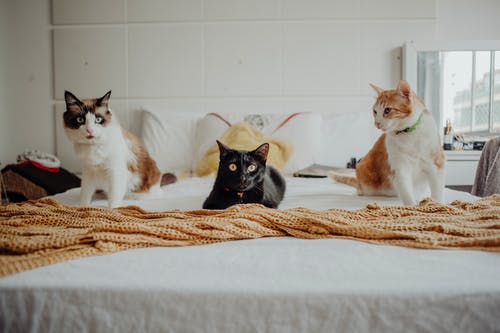
Welcoming a furry little friend into your home is like the sunrise of a new adventure. These tiny balls of fluff aren’t just brimming with life; they’re also curious explorers with a knack for getting into everything.
As pet parents, it’s our job to create a safe space for them to discover the world without facing danger at every corner. So, how can we puppy or kitten-proof our homes and ensure the utmost safety for our little companions? Let’s walk through the essentials together, paw in paw.
The Basics of Home Safety for Pets
Ensuring the safety of your home for puppies and kittens involves understanding their behavior and tendencies, similar to dealing with toddlers. Their exploration involves using their mouths, paws, and insatiable curiosity. To create a secure environment, it’s crucial to view your home from their perspective and identify potential hazards that may not be apparent to adults.
Secure Your Spaces
Start by thoroughly examining every room for potential dangers. Look out for small objects that could be swallowed, toxic plants, or easily accessible trash cans. Take special care to secure cabinets, especially those under the sink where household chemicals are typically stored, using child-proof locks to prevent accidental access.
Keep Electrical Hazards at Bay
Puppies and kittens have a natural inclination to chew, and cords often become irresistible chew toys. To prevent any shocking experiences, bundle and conceal cords or use cord protectors. Ensure that all power strips and sockets are made inaccessible to curious pets.
Set Up Safe Zones
Designate specific areas in your home where it’s safe for your pet to roam freely. These zones should exclude any rooms containing potential hazards or valuable items that could be mistaken for chew toys. Establishing safe zones provides a controlled environment for your pet’s exploration, minimizing the risk of accidents.
Tackling Specific Areas of the Home
Addressing specific areas of your home is crucial to ensure the safety of your pet. Let’s explore how you can safety-proof different areas within your dwelling:
In the Kitchen
-
Store Food Safely: Keep food items out of your pet’s reach to prevent sneaky snacking on potentially harmful substances.
-
Secure Sharp Utensils: Place knives and other sharp utensils securely in drawers to prevent accidental injuries.
-
Pet-Proof Trash Bin: Ensure that the trash bin is pet-proof to prevent your pet from accessing potentially hazardous items.
In the Living Room
-
Anchor Furniture: Anchor heavy furniture that could topple if climbed on, especially if you have an active and playful pet.
-
Remove Choking Hazards: Remove small trinkets or décor items that could pose choking hazards if chewed or swallowed.
-
Supervise Around Windows/Balconies: Supervise your pet when it’s around open windows or balconies to prevent accidental falls.
In Bedrooms and Play Areas
-
Pick Up Clothing Items: Pick up clothing items like socks and underwear that can cause intestinal blockages if eaten.
-
Use Protective Covers: Use covers to protect mattresses and upholstered furniture from accidents, especially during potty training.
-
Limit Access to Non-Pet Toys: Limit your pet’s access to toys not intended for them to prevent ingestion of small parts or materials.
These specific safety measures address potential risks in different areas of your home, taking into account the unique challenges each space may present for your pet’s well-being. Regular supervision, proper storage, and thoughtful precautions contribute to creating a safe and secure environment for your furry friend.
Veterinary Care for Puppies and Kittens
A significant aspect of bringing a new kitten into your home revolves around their health. Engaging early in veterinary care for kittens and puppies sets the foundation for a healthy life. Aside from the essentials like vaccinations and regular check-ups, talk to your vet about the best ways to integrate preventive care into your kitten’s daily routine.
Anticipating the Unexpected
Even with all the precautions in the world, accidents can happen. That’s why it’s important to be acquainted with emergency veterinary services in your area. Know their location and have their contact information handy. In the event of an emergency, prompt action could save your pet’s life. It’s also wise to have a pet first-aid kit and know the basics of pet CPR and emergency response.
Be Ready for the Bigger Medical Steps
Puppy and kitten proofing doesn’t stop at the physical space of your home; it also includes preparing for medical procedures they may need. Most pets, at some point, require medical interventions for their well-being, such as spaying or neutering and dental care. Here’s where reading this page regarding vet surgery comes into play. Research trusted vets, understand common procedures, their benefits, and how to care for your pet post-operation.
Final Thoughts
Our furry friends rely on us for their safety and well-being. By taking the steps we’ve outlined to puppy or kitten-proof your home, you’re not just providing a secure environment; you’re also nurturing a loving and trust-filled relationship.
Remember, the time and effort we invest today in these cuddly companions paves the way for a future full of paw prints on our hearts and joy in our lives. So arm yourself with knowledge, preparatory measures, and all the love in your heart, and you’ll be ready to tackle this rewarding responsibility head-on.

 Which Common Illnesses Require a Vet Internist’s Expertise?
Which Common Illnesses Require a Vet Internist’s Expertise?  Can Vaccines Reduce Common Illnesses in Senior Pets?
Can Vaccines Reduce Common Illnesses in Senior Pets?  Why Should You Not Skip Your Pet’s Routine Examination?
Why Should You Not Skip Your Pet’s Routine Examination?  Why Is It Important to Find an Exotic Vet for Your Small Mammal?
Why Is It Important to Find an Exotic Vet for Your Small Mammal?  How Often Should Senior Pets See the Vet?
How Often Should Senior Pets See the Vet?  Pet Wellness: Timely Vet Exams and Identifying Health Problems
Pet Wellness: Timely Vet Exams and Identifying Health Problems  What Is ISTDP, and Who Can Benefit From It?
What Is ISTDP, and Who Can Benefit From It?  What Are the Benefits of a Vet Specialist Consultation?
What Are the Benefits of a Vet Specialist Consultation?